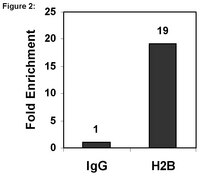Reelin is a target of polyglutamine expanded ataxin-7 in human spinocerebellar ataxia type 7 (SCA7) astrocytes.
McCullough, SD; Xu, X; Dent, SY; Bekiranov, S; Roeder, RG; Grant, PA
Proceedings of the National Academy of Sciences of the United States of America
109
21319-24
2011
Mostra il sommario
Spinocerebellar ataxia type 7 (SCA7) is an autosomal-dominant neurodegenerative disorder that results from polyglutamine expansion of the ataxin-7 (ATXN7) protein. Remarkably, although mutant ATXN7 is expressed throughout the body, pathology is restricted primarily to the cerebellum and retina. One major goal has been to identify factors that contribute to the tissue specificity of SCA7. Here we describe the development and use of a human astrocyte cell culture model to identify reelin, a factor intimately involved in the development and maintenance of Purkinje cells and the cerebellum as a whole, as an ATXN7 target gene. We found that polyglutamine expansion decreased ATXN7 occupancy, which correlated with increased levels of histone H2B monoubiquitination, at the reelin promoter. Treatment with trichostatin A, but not other histone deacetylase inhibitors, partially restored reelin transcription and promoted the accumulation of mutant ATXN7 into nuclear inclusions. Our findings suggest that reelin could be a previously unknown factor involved in the tissue specificity of SCA7 and that trichostatin A may ameliorate deleterious effects of the mutant ATXN7 protein by promoting its sequestration away from promoters into nuclear inclusions. | 23236151
 |
Elongin B-mediated epigenetic alteration of viral chromatin correlates with efficient human cytomegalovirus gene expression and replication.
Hwang, J; Saffert, RT; Kalejta, RF
mBio
2
e00023-11
2010
Mostra il sommario
Elongins B and C are members of complexes that increase the efficiency of transcriptional elongation by RNA polymerase II (RNAPII) and enhance the monoubiquitination of histone H2B, an epigenetic mark of actively transcribed genes. Here we show that, in addition to its role in facilitating transcription of the cellular genome, elongin B also enhances gene expression from the double-stranded DNA genome of human cytomegalovirus (HCMV), a pathogenic herpesvirus. Reducing the level of elongin B by small interfering RNA- or short hairpin RNA-mediated knockdown decreased viral mRNA expression, viral protein accumulation, viral DNA replication, and infectious virion production. Chromatin immunoprecipitation analysis indicated viral genome occupancy of the elongating form of RNAPII, and monoubiquitinated histone H2B was reduced in elongin B-deficient cells. These data suggest that, in addition to the previously documented epigenetic regulation of transcriptional initiation, HCMV also subverts cellular elongin B-mediated epigenetic mechanisms for enhancing transcriptional elongation to enhance viral gene expression and virus replication.The genetic and epigenetic control of transcription initiation at both cellular and viral promoters is well documented. Recently, the epigenetic modification of histone H2B monoubiquitination throughout the bodies of cellular genes has been shown to enhance the elongation of RNA polymerase II-initiated transcripts. Mechanisms that might control the elongation of viral transcripts are less well studied. Here we show that, as with cellular genes, elongin B-mediated monoubiquitination of histone H2B also facilitates the transcriptional elongation of human cytomegalovirus genes. This and perhaps other epigenetic markings of actively transcribed regions may help in identifying viral genes expressed during in vitro latency or during natural infections of humans. Furthermore, this work identifies a novel, tractable model system to further study the regulation of transcriptional elongation in living cells. Testo completo dell'articolo | 21447700
 |











